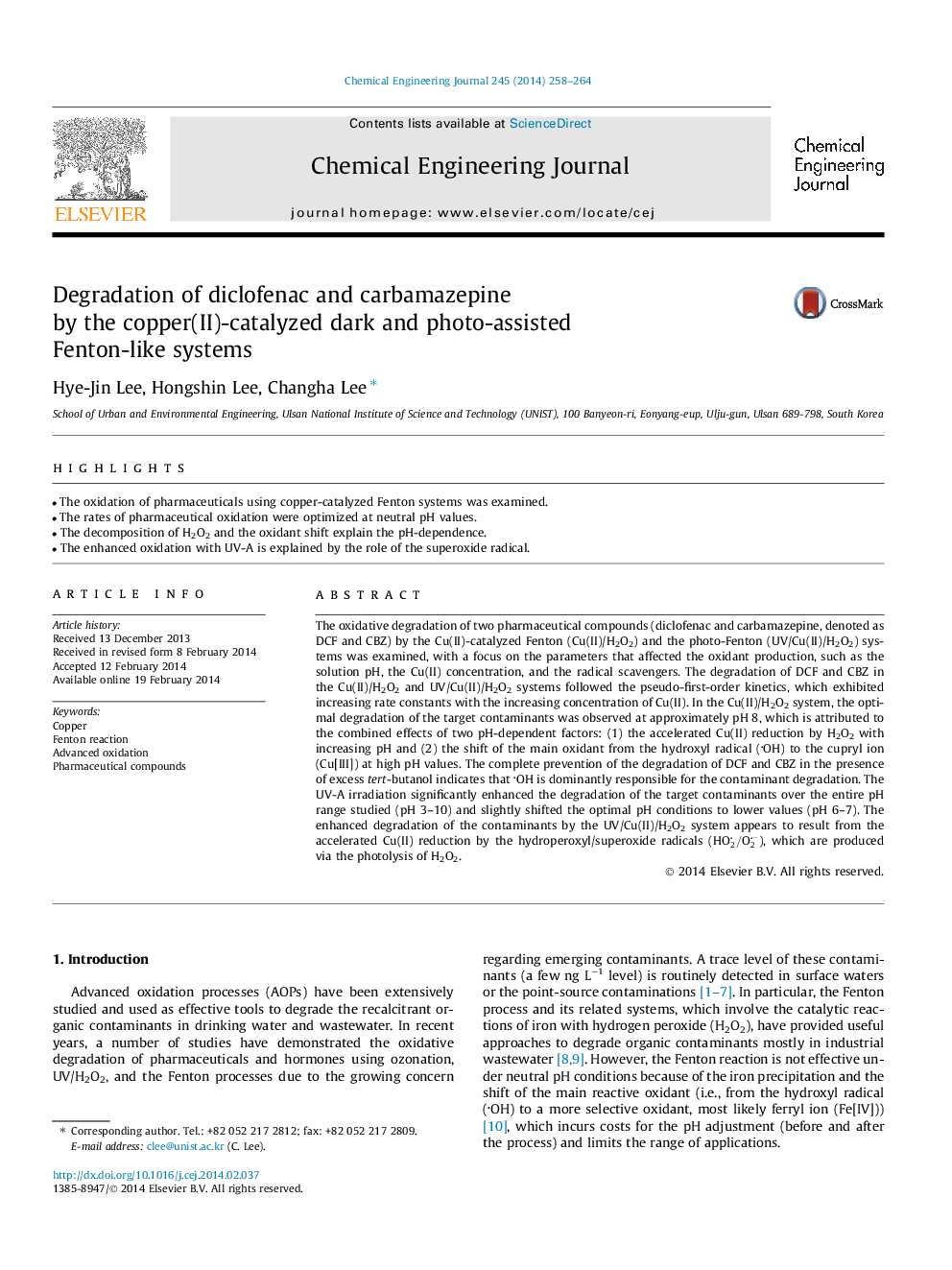| کد مقاله | کد نشریه | سال انتشار | مقاله انگلیسی | نسخه تمام متن |
|---|---|---|---|---|
| 147455 | 456393 | 2014 | 7 صفحه PDF | دانلود رایگان |

• The oxidation of pharmaceuticals using copper-catalyzed Fenton systems was examined.
• The rates of pharmaceutical oxidation were optimized at neutral pH values.
• The decomposition of H2O2 and the oxidant shift explain the pH-dependence.
• The enhanced oxidation with UV-A is explained by the role of the superoxide radical.
The oxidative degradation of two pharmaceutical compounds (diclofenac and carbamazepine, denoted as DCF and CBZ) by the Cu(II)-catalyzed Fenton (Cu(II)/H2O2) and the photo-Fenton (UV/Cu(II)/H2O2) systems was examined, with a focus on the parameters that affected the oxidant production, such as the solution pH, the Cu(II) concentration, and the radical scavengers. The degradation of DCF and CBZ in the Cu(II)/H2O2 and UV/Cu(II)/H2O2 systems followed the pseudo-first-order kinetics, which exhibited increasing rate constants with the increasing concentration of Cu(II). In the Cu(II)/H2O2 system, the optimal degradation of the target contaminants was observed at approximately pH 8, which is attributed to the combined effects of two pH-dependent factors: (1) the accelerated Cu(II) reduction by H2O2 with increasing pH and (2) the shift of the main oxidant from the hydroxyl radical (OH) to the cupryl ion (Cu[III]) at high pH values. The complete prevention of the degradation of DCF and CBZ in the presence of excess tert-butanol indicates that OH is dominantly responsible for the contaminant degradation. The UV-A irradiation significantly enhanced the degradation of the target contaminants over the entire pH range studied (pH 3–10) and slightly shifted the optimal pH conditions to lower values (pH 6–7). The enhanced degradation of the contaminants by the UV/Cu(II)/H2O2 system appears to result from the accelerated Cu(II) reduction by the hydroperoxyl/superoxide radicals (HO2/O2-), which are produced via the photolysis of H2O2.
Journal: Chemical Engineering Journal - Volume 245, 1 June 2014, Pages 258–264